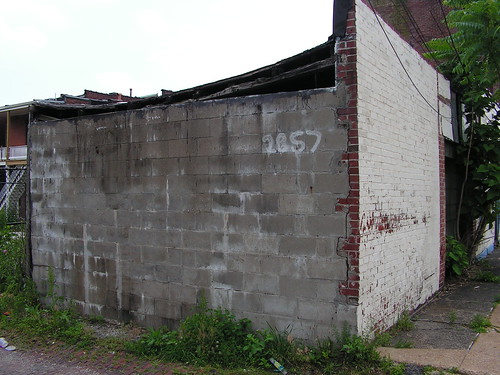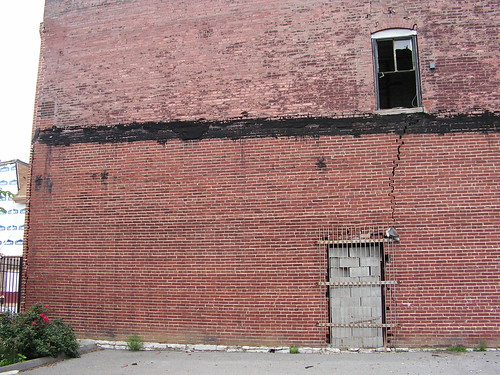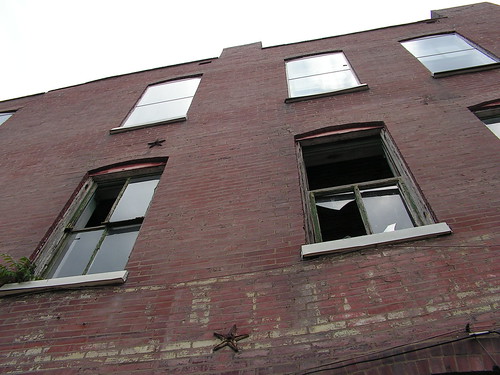Planning & Promotion Continues for Loop Trolley
|
|
Yesterday I attended an Economic Development Forum sponsored by the Loop Trolley. Guest speaker, Portland developer John Carroll, spoke about the benefits he has seen in Portland over the last decade.

The streetcar/trolley is not the most efficient way to get persons from point A to B. That would mode would be the bus. However, as our speaker pointed out, the permanence of a fixed rail helps entice development.
It was December 5, 2005 that the ribbon was cut on the two restored streetcars used to promote the Loop Trolley. I was there that day:

That day I wrote:
One could argue that the loop, both East and West, is going fine and doesn’t need the federal dollars that it will likely receive to move this project forward. I agree philosophically. Cherokee Street comes to mind [as] a commercial street that could benefit from an exciting transportation system such as this trolley system. But Cherokee Street doesn’t have a Joe Edwards pushing for anything. So I say build the trolley not where it is needed most but where we can get it built and where it will get used.
Once built, the region, I hope, will demand more streetcars throughout the city and region.
In the nearly four years since I wrote the above I have experienced streetcar systems in San Francisco, New Orleans, Memphis, Little Rock, Seattle, Portland and Toronto. Quite the list and quite different from each other. Some are old systems that have remained in operation. Others are new with restored, reproduction and modern vehicles. I’ve attended two Rail-Volution conferences since then — Chicago in 2006 and Miami Beach in 2007.
The Loop area is so named because of the streetcar line that used to make a loop and turn back toward downtown. The western end is in the municipality of University City. In recent years the restaurants & shopping have expanded east of Skinker in the City of St. Louis.
Loop’s leader Joe Edwards want to return a streetcar (er, Trolley) to Delmar.
The blue line on the left shows the route as planned. It simply would go from the Lion gates at the west end to De Balivere at the east and then loop around the Missouri History Museum on the edge of Forest Park. Along the short route it would pass two MetroLink light rail stations (Delmar & Forest Park). Would the trolley be transit overkill? At first I thought so.
But between these two stations and all along the proposed route there are plenty of development opportunities. Development around light rail stations happens in rings whereas development along streetcars follows the line — impacting far more real estate and reaching more people. More bang for the buck basically.
Plus I want to get a system in operation in St. Louis so that it can be expanded to serve more of the city. The lines on the map above are my most recent ideas for potential extensions (a variation on earlier thoughts).
One idea is to take a line into Forest Park to reach the Art Museu, Zoo, and Muni. This would be a great way to get an overview of the park and it could reduce the need for more parking. Next I’d extend a line north through what is now the Ruth Porter perdestrian mall. At the very least go up to Page and come back south on Goodfellow. The biggest extension would continue east on Delmar.
After crossing Kingshighway the eastbound track would go down Washington, one block south of Delmar.  This would widen the impack of the investment. It would jog down to Olive at Vandeventer and then straight line into the CBD. The return line would pass the MetroLink light rail station at 6th & Washington as well as pass the convention center. Joe Edwards said he felt a streetcar line could give St. Louis the nod when competing with other cities for a conventions. A streetcar passing between the convention center and convention hotel would be a natural draw. Visitors could easily be enticed to hop on the line to see the sights along the route — getting an overview to help them where to decide where to dine.
At Tucker I show the westbound line going west on Locust rather than Washington. This puts is only a block off the eastbound track on Olive, avoids messing up the expensive streetscape on Washington between 12th & 18th and, as a bonus, it would run past my front door at 16th & Locust.
Of course it can’t all be just east & west. Above I show a north-south pair of lines on Vandeventer & Sarah. Around Jefferson Paul McKee is planning a north line for his NorthSide project. I’d want a line or two heading south as well. I’d like to be able to reach all parts of the city via streetcar. Perhaps if I live another 50 years? But the lines shown above are realistic and they could, over time, work to increase our population and job base. We could become the type of city that retains young graduates from laces like Saint Louis University and Waashington University.
To learn more about the Loop Trolley consider attending the public open house at 4pm on July 8th, Regional Arts Commission, 6128 Delmar, 4 to 7 p.m.
– Steve Patterson







